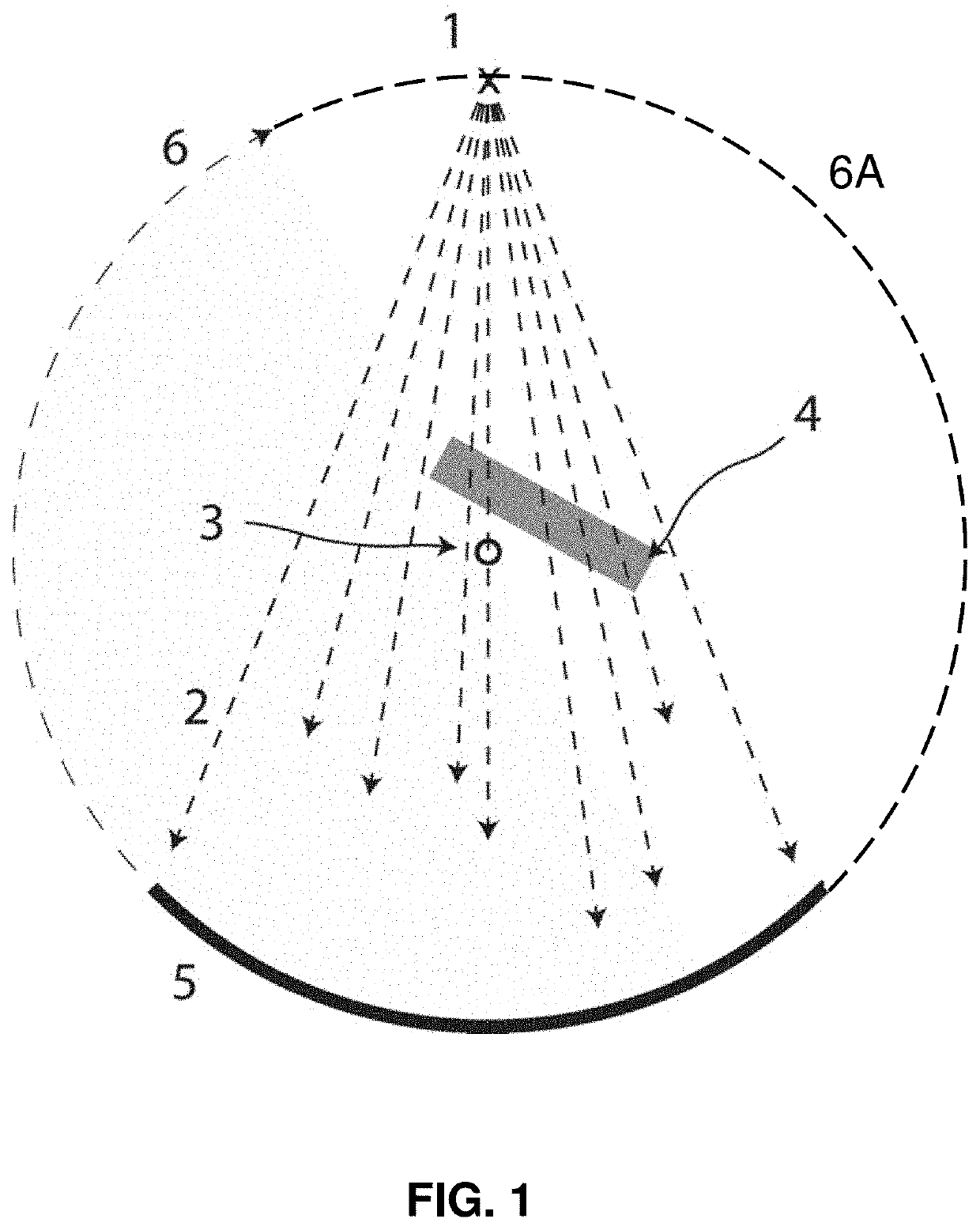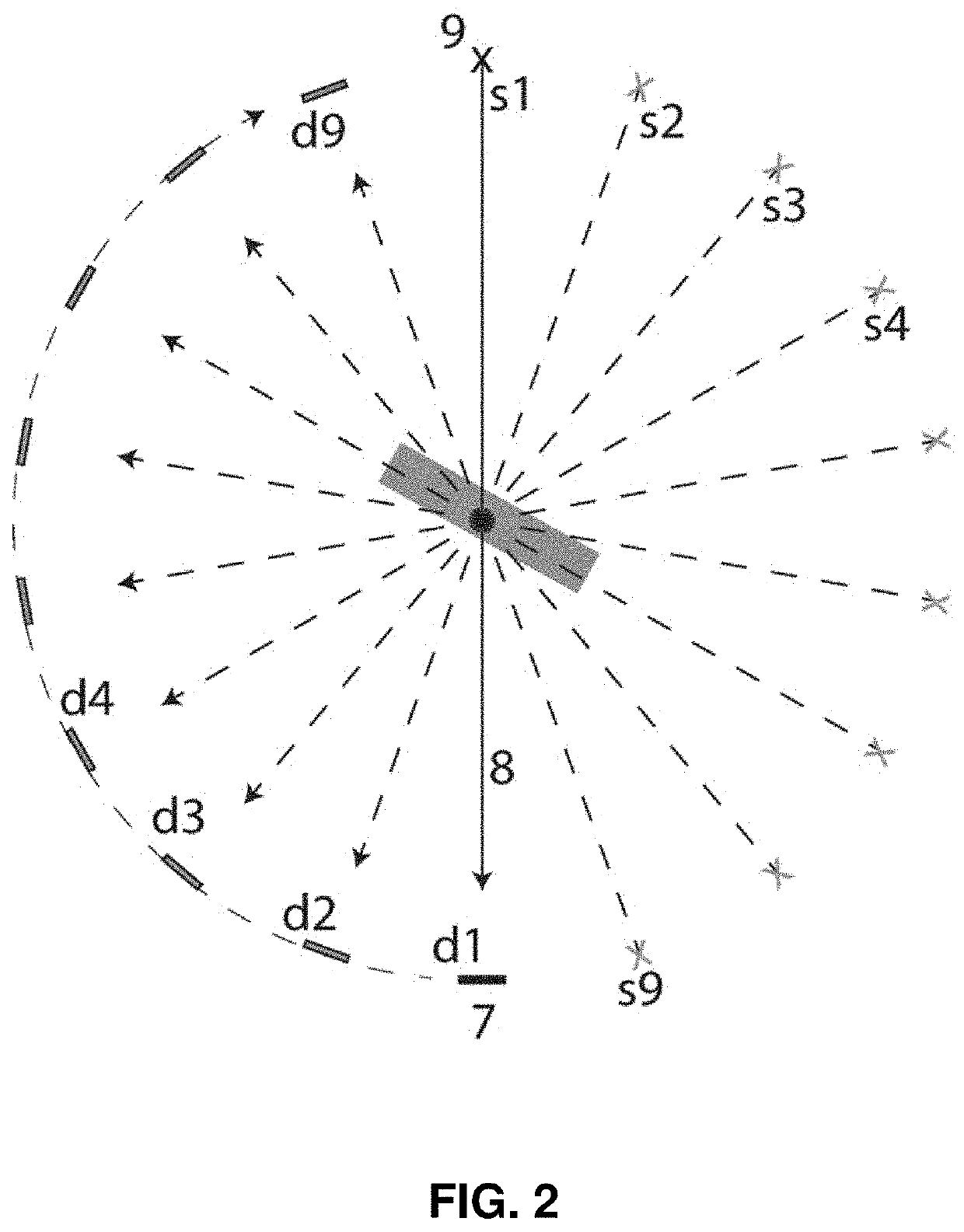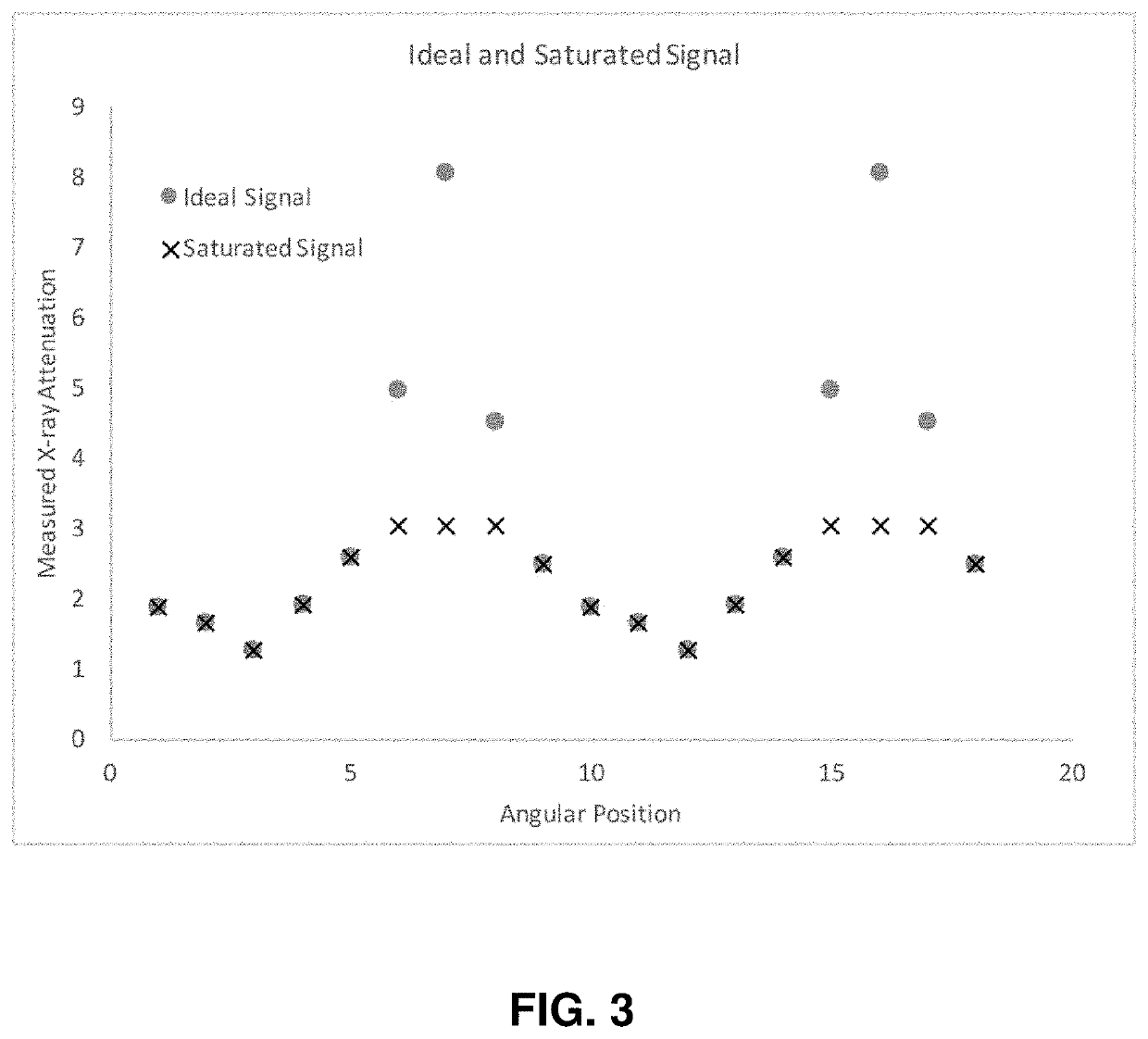Method for artifact reduction using monoenergetic data in computed tomography
a computed tomography and monoenergetic data technology, applied in the field of computed tomography (ct) imaging systems, can solve the problems of reducing the sensitivity of the detector, affecting the detection accuracy, and affecting the detection accuracy, and achieve the effect of low contrast and high contras
- Summary
- Abstract
- Description
- Claims
- Application Information
AI Technical Summary
Benefits of technology
Problems solved by technology
Method used
Image
Examples
Embodiment Construction
Metal Artifact Correction Using Monoenergetic Data
In the preferred embodiment of the present invention, several monoenergetic data sets (either approximation-derived, experimentally-measured or synthetically-derived) are used together to minimize artifacts and maximize image quality. More particularly, an object imaged with a low-energy monochromatic X-ray source demonstrates a high degree of contrast between radiologically opaque and transparent objects, while an object imaged with a high-energy monochromatic X-ray source shows relatively low contrast between materials. This is anecdotally explained by the fact that high-energy X-rays tend to simply pass through all materials, whereas low-energy X-rays are more likely to interact with the material via absorption or scattering. Likewise, high-energy X-rays are less likely to be impeded by metal and the images generated from high-energy X-ray data suffer less from metal artifacts.
The fundamental idea is to combine the high-energy dat...
PUM
 Login to View More
Login to View More Abstract
Description
Claims
Application Information
 Login to View More
Login to View More - R&D
- Intellectual Property
- Life Sciences
- Materials
- Tech Scout
- Unparalleled Data Quality
- Higher Quality Content
- 60% Fewer Hallucinations
Browse by: Latest US Patents, China's latest patents, Technical Efficacy Thesaurus, Application Domain, Technology Topic, Popular Technical Reports.
© 2025 PatSnap. All rights reserved.Legal|Privacy policy|Modern Slavery Act Transparency Statement|Sitemap|About US| Contact US: help@patsnap.com



